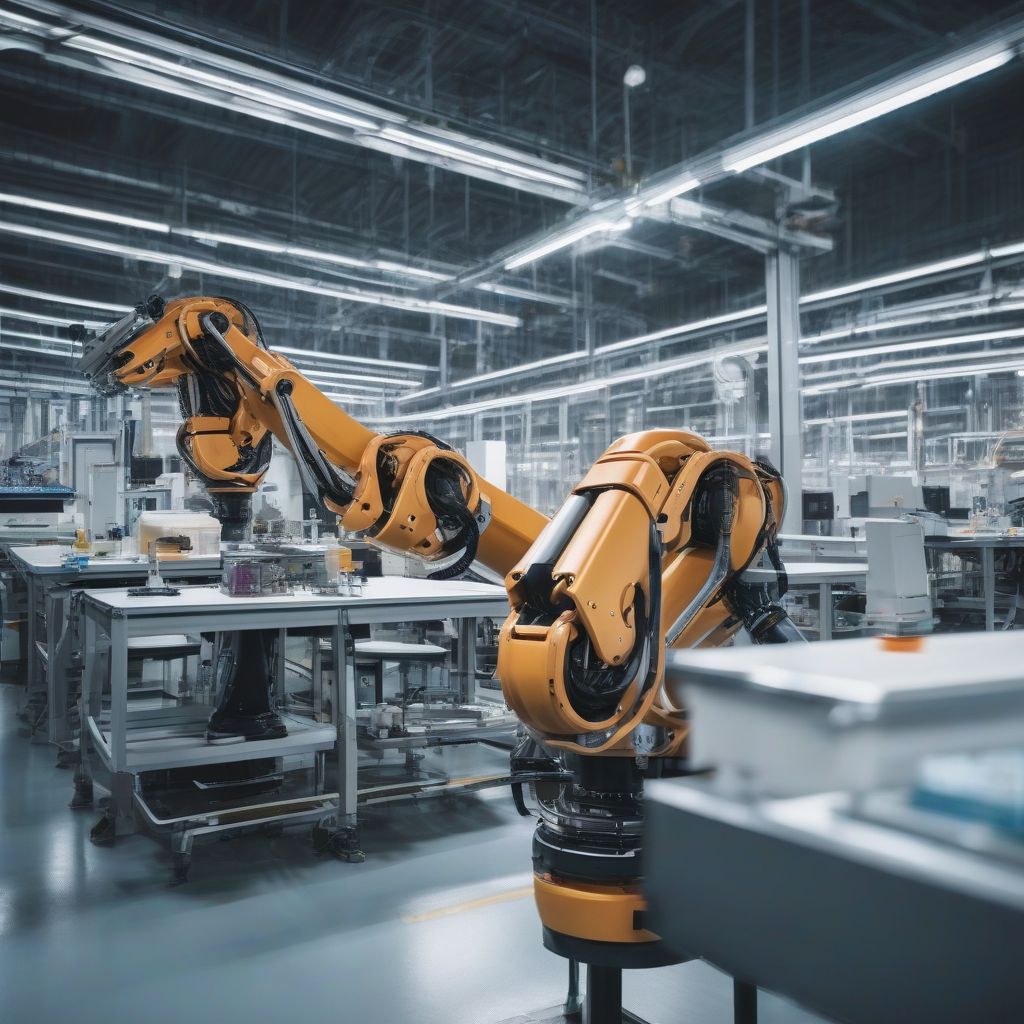Imagine a world where robots seamlessly integrate into our lives, assisting us with complex tasks and simplifying our daily routines. This isn’t science fiction; it’s the exciting reality being shaped by emerging technologies in robotics software. As a nutritionist and meal prepping coach, I thrive on efficiency and innovation—and the world of robotics software is bursting with both! It’s fascinating to see how these advancements are poised to revolutionize industries from healthcare and manufacturing to our very own kitchens.
The Driving Forces Behind Robotics Software Evolution
Before we dive into the specifics, it’s crucial to understand the forces propelling this rapid evolution. Much like how I guide my clients to make healthier choices, several key factors are shaping the future of robotics:
- The Rise of Artificial Intelligence (AI) and Machine Learning (ML): AI and ML algorithms empower robots to learn from data, adapt to new environments, and make decisions with minimal human intervention. This leap in cognitive ability is revolutionizing what robots can achieve.
- The Demand for Automation: Across industries, businesses are seeking ways to enhance efficiency, reduce costs, and improve safety. Robotic automation offers a compelling solution, and the demand for sophisticated robotics software is skyrocketing.
- Advancements in Sensor Technology: Robots rely on sensors to perceive and interpret their surroundings. New-age sensors are becoming increasingly sophisticated, providing robots with richer data and enabling them to navigate complex environments with precision.
Game-Changing Technologies to Watch
The convergence of these factors has fueled the development of groundbreaking technologies in robotics software. Here are some of the most impactful advancements:
1. Cloud Robotics: Unleashing Scalability and Collaboration
Just as I store my clients’ meal plans securely online, cloud robotics leverages the power of cloud computing to enhance robot capabilities. This paradigm shift offers numerous benefits:
- Enhanced Data Storage and Processing: Cloud platforms provide robots with access to vast computational resources and storage, enabling them to process complex data and run advanced algorithms more efficiently.
- Centralized Learning and Update Deployment: Robots connected to the cloud can share data and learn from each other’s experiences, accelerating the development of new skills and improving overall performance across the board.
- Scalability and Flexibility: Cloud robotics simplifies the deployment and management of robot fleets, allowing businesses to scale their automation efforts up or down as needed.
2. Edge Computing: Enabling Real-Time Decision-Making
Think of edge computing as empowering robots to think on their feet. Instead of relying solely on the cloud, edge computing brings computation and data storage closer to the robot, enabling:
- Faster Response Times: By processing data locally, robots can react to changes in their environment in real time, crucial for tasks that require quick decision-making.
- Increased Reliability: Edge computing reduces dependence on continuous cloud connectivity, making robots more resilient in environments with intermittent network coverage.
- Enhanced Security: Processing sensitive data locally on the edge can enhance security by minimizing data transmission to the cloud.
3. Open-Source Robotics Frameworks: Fostering Collaboration and Innovation
Imagine a community of developers sharing recipes, constantly refining and improving them. That’s the essence of open-source robotics frameworks. These platforms provide:
- Faster Development Cycles: Developers can leverage pre-built components and libraries, accelerating the development of new robotics applications.
- Increased Interoperability: Open-source frameworks promote standardization, making it easier for different robotic systems to communicate and work together.
- A Thriving Community: The open-source nature fosters collaboration and knowledge sharing among developers worldwide, driving continuous innovation.
4. Simulation and Digital Twins: Perfecting Robots in the Virtual World
Much like athletes use simulations to improve their performance, robotics software developers are increasingly turning to simulation and digital twins:
- Risk-Free Testing and Optimization: Virtual environments allow developers to test algorithms and robot designs in a safe and controlled setting, identifying potential issues before real-world deployment.
- Accelerated Training: AI-powered robots can undergo extensive training in simulations, exposing them to a wide range of scenarios and accelerating their learning curve.
- Predictive Maintenance: Digital twins—virtual representations of physical robots—can be used to monitor performance, predict maintenance needs, and optimize robot lifecycles.
 Robotic Arm in a Factory Setting
Robotic Arm in a Factory Setting
Addressing User Queries: Common Questions About Emerging Robotics Software
1. What are the main challenges in developing robotics software?
Developing robust and reliable robotics software presents unique challenges, including ensuring safety, dealing with sensor noise and uncertainty, and creating algorithms that can adapt to real-world environments.
2. What programming languages are commonly used in robotics software?
Popular languages include Python (known for its extensive libraries and ease of use), C++ (for its performance and low-level hardware access), and ROS (Robot Operating System) – a flexible framework for writing robot software.
3. What are some examples of robots using these emerging technologies?
Examples include autonomous vehicles utilizing AI and edge computing, warehouse robots using cloud robotics for coordination, and surgical robots leveraging advanced simulation for precision.
[amazon bestseller=”robotics”]
The Future Landscape: A Fusion of Technology and Human Ingenuity
The rapid evolution of robotics software is a testament to human ingenuity and our drive to push the boundaries of what’s possible. As these technologies mature, we can expect:
- Increased Robot Autonomy: Robots will become increasingly capable of operating independently, making complex decisions and adapting to dynamic environments.
- Closer Human-Robot Collaboration: The lines between human and robot tasks will continue to blur as we move towards a future of collaborative robots (cobots) designed to work alongside humans safely and efficiently.
- New Applications Across Industries: The applications of robotics software will expand into new frontiers, from personalized medicine and elder care to environmental monitoring and space exploration.
The future of robotics software is brimming with possibilities. While my passion lies in empowering individuals to lead healthier lives through mindful eating, I’m captivated by the potential of these technologies to reshape our world for the better. By embracing innovation and understanding the transformative power of robotics software, we can step confidently into a future where automation enhances our lives in countless ways.
